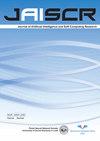证据理论框架下直觉模糊Topsis方法的一种推广方法
IF 2.4
3区 计算机科学
Q2 COMPUTER SCIENCE, ARTIFICIAL INTELLIGENCE
Journal of Artificial Intelligence and Soft Computing Research
Pub Date : 2021-01-29
DOI:10.2478/jaiscr-2021-0010
引用次数: 7
摘要
摘要在证据的Dempster-Shafer理论(DST)框架下,基于直觉模糊集理论(IFS)的重新定义,提出了在直觉模糊集中通过与理想解相似性(TOPSIS)建立顺序偏好的技术的推广。DST数学工具的使用可以避免最近在直觉模糊值上定义的传统阿塔纳索夫运算定律中揭示的一系列局限性和缺点,这些局限性和缺陷可能在解决多准则决策问题时产生不可接受的结果。这大大提高了直觉模糊TOPSIS方法中使用的聚合算子的质量。指出,传统的TOPSIS方法可以自然地被视为一些修改的局部准则的加权和。由于这种聚合方法并不总是反映决策者的良好意图,因此引入了两种额外的聚合方法,这两种方法不能在传统的基于直觉模糊值的局部标准权重的IFS框架中定义。考虑到不同的聚合方法通常产生不同的替代排名以获得折衷排名,已经应用了聚合模式的聚合方法。通过实例说明了该方法的有效性和特点。本文章由计算机程序翻译,如有差异,请以英文原文为准。
An Approach to Generalization of the Intuitionistic Fuzzy Topsis Method in the Framework of Evidence Theory
Abstract A generalization of technique for establishing order preference by similarity to the ideal solution (TOPSIS) in the intuitionistic fuzzy setting based on the redefinition of intuitionistic fuzzy sets theory (A IFS) in the framework of Dempster-Shafer theory (DST) of evidence is proposed. The use of DST mathematical tools makes it possible to avoid a set of limitations and drawbacks revealed recently in the conventional Atanassov’s operational laws defined on intuitionistic fuzzy values, which may produce unacceptable results in the solution of multiple criteria decision-making problems. This boosts considerably the quality of aggregating operators used in the intuitionistic fuzzy TOPSIS method. It is pointed out that the conventional TOPSIS method may be naturally treated as a weighted sum of some modified local criteria. Because this aggregating approach does not always reflects well intentions of decision makers, two additional aggregating methods that cannot be defined in the framework of conventional A IFS based on local criteria weights being intuitionistic fuzzy values, are introduced. Having in mind that different aggregating methods generally produce different alternative rankings to obtain the compromise ranking, the method for aggregating of aggregation modes has been applied. Some examples are used to illustrate the validity and features of the proposed approach.
求助全文
通过发布文献求助,成功后即可免费获取论文全文。
去求助
来源期刊

Journal of Artificial Intelligence and Soft Computing Research
COMPUTER SCIENCE, ARTIFICIAL INTELLIGENCE-
CiteScore
7.00
自引率
25.00%
发文量
10
审稿时长
24 weeks
期刊介绍:
Journal of Artificial Intelligence and Soft Computing Research (available also at Sciendo (De Gruyter)) is a dynamically developing international journal focused on the latest scientific results and methods constituting traditional artificial intelligence methods and soft computing techniques. Our goal is to bring together scientists representing both approaches and various research communities.
 求助内容:
求助内容: 应助结果提醒方式:
应助结果提醒方式:


